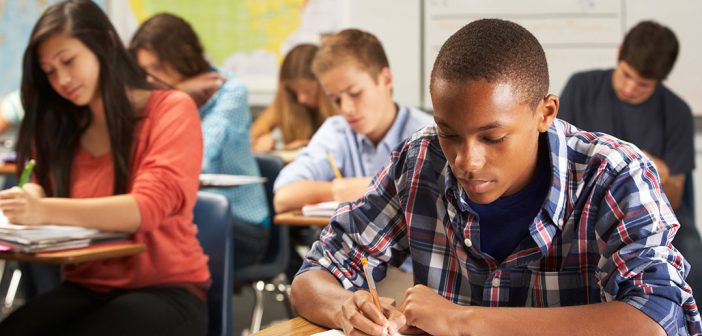America’s zero-tolerance approach to public school discipline has created an epidemic of suspensions and expulsions that punishes everyday behavior, disproportionately targets African-American children, and undermines schools in the process, University of South Carolina Law professor and author Derek W. Black said during a talk at Fordham Law School on March 6.
Black’s book, Ending Zero Tolerance: The Crisis of Absolute School Discipline, calls for widespread reform of the methods that resulted in more than three million suspensions and expulsions in K-12 public schools in 2011, according to a U.S. Department of Education report released in 2014. The troubling combination of high-profile school shootings, such as Columbine in 1999, and federal legislation, including the No Child Left Behind Act in 2001, caused a kind of punitive overreach by school administrators and policy makers, Black said.
This new climate grossly impacted African-American students, who are suspended at a rate three to six times that of their white peers, depending on the state and locality, Black noted during his talk hosted by Fordham’s Education Law Collaborative.
“The numbers don’t lie. We have a racial bias problem that causes disparities in school discipline,” said Black, a former attorney with the Lawyers’ Committee for Civil Rights Under Law. He explained that his book aims to debunk theories that African-American students misbehave more than white classmates and that removing “bad” students protects the “good” students from having their school experience undermined.
Rather than an aberration, racial discipline disparities have been the rule dating back to 1960s school desegregation. White families said they would tolerate integration but demanded “order,” Black said.
“As soon as African-American and white children began to go to school together the differential application of school discipline started to occur very quickly,” the author added, explaining that the standard national narrative about school desegregation more often focuses on busing.
In 1975, the Supreme Court held in Goss v. Lopez that a public school must conduct a hearing before suspending a student. Such hearings at one time resulted in 50 percent of suspensions being overturned, but that number has dropped to 10 percent, leaving students without much recourse in the event of suspension or expulsion.
Today, school discipline is generally framed as an issue of the “good vs. “bad” students, but a growing body of research suggests suspensions and expulsions have a negative effect on innocent bystanders, not just the punished students.
“Suspension and expulsion as a primary tool of dealing with student misbehavior actually changes the other students’ experiences in school, their perception of school, and helps sever their idea of a positive school environment,” Black said. “At some point, discipline becomes too harsh and even the good student rebels.”
The suspended student experiences long-term impacts, often including another suspension, while failing to receive help for the root causes of their behavior—challenges faced outside school, academic difficulties, and emotional and behavioral disabilities, Black said.
Black’s book cites three theories of discipline reform:
- The federal constitution should limit irrational discipline. Rational discipline must involve consideration for intent, culpability, and whether a series of misbehavior exists when determining what punishment, if any, is warranted.
- Because students possess a constitutional right to education, states must provide a good reason to take away this right. Thus, Black said schools’ response to misbehavior must be narrowly tailored, so that if there is a method to deal with this other than expulsion, that should be tried.
- When overly harsh discipline policies undermine the quality of a school’s education, all students, not just the suspended ones, have a claim against the state.
Even recent positive developments in school discipline reform only highlight the brutality and absurdity at play, Black observed. Recently, 11 states banned suspension or expulsion for elementary students because no evidence existed that the punishment yielded any positive impacts.
“Why in the heck are they suspending or expelling first- or second-graders in the first place?” Black asked rhetorically. “These states have done nothing to stop suspension or expulsion in middle or high school, where the lion’s share of suspensions and expulsions are. It’s very small progress.”



